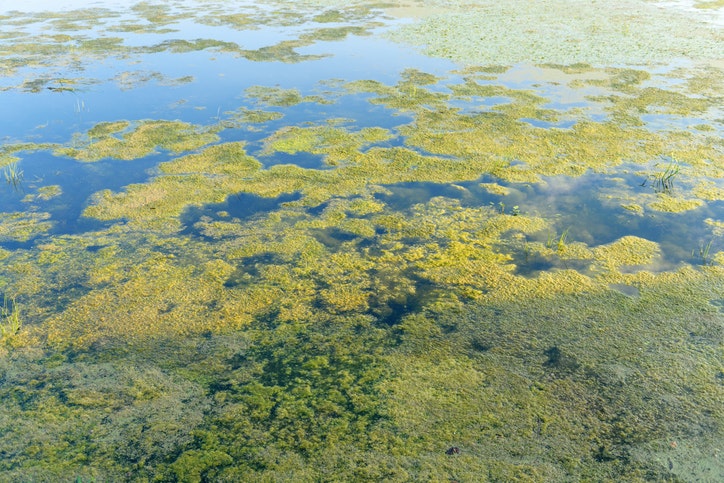The Nature of Algal Blooms

Algae are photosynthetic microorganisms that are found in most habitats. They vary from small, single-celled forms to complex multi-cellular forms. An algal bloom is a rapid increase in the density of algae in an aquatic system. Spring through early fall is the time of year when algae and algal blooms are typically seen. Algal blooms can be natural phenomena, but their frequency, duration, and intensity are increased by nutrients (nitrogen and phosphorus) in the water. In the San Francisco Bay, nutrients come from a variety of sources including stormwater and industry runoff from the Sacramento River Delta and community water use via treated wastewater.

Algae can multiply quickly in waterways, particularly when the water is warm, and the weather is calm. This proliferation causes blooms of algae that turn the water noticeably green, although other colors can occur. Some species of algae grow in clumps covered in a gelatinous coating and have the capability to float, allowing cells to stick together into large surface scums.

Excessive algal growth causes less oxygen in the water which places stress on aquatic organisms. Some algal blooms can produce toxins which that are harmful to people and pets. People can be exposed during water contact activities like swimming and waterskiing. Pets may become ill if they eat scum or mats in the water or on shore, drink the water, or lick their fur after being in the water. In the event of potentially harmful algal bloom, it is important to follow all posted advisories and stay away from algae and scum in the water and on shore.
MVSD discharges wastewater with nutrient levels that not only meet all required standards but are also well below nutrient levels from many other wastewater dischargers. This is partially attributed to the nutrient removal achieved in Moorhen Marsh, the District’s constructed wetland. As wastewater flows through the marsh, nutrients are taken up by the roots of the aquatic vegetation, thereby reducing the level of nutrients in the water that is discharged to the receiving water. The District continues to research on ways to enhance nutrient removal as part of our commitment to protect public health and the environment.








